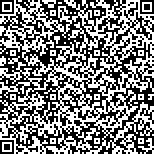下载中心
优秀审稿专家
优秀论文
相关链接
摘要

传统的地物面积测量受精度和效率制约,为此引入了结合遥感影像的空间分层抽样方法.首先以遥感影像的预分类结果作为模拟地物的真实分布,在地物外沿等概率随机添加不同比例的错分像元,从而获得准真实地物区的摸拟预分类结果,并依此设定各层等比例取样的样本人层标志,指导地物样本的选取,然后以抽中样本地物的准真实值之和按比例推算出总量.通过比较分析各水平含量的地物类别、不同预分类精度、层内随机和系统抽样下的多次总量估计精度及其稳定性变化情况,结果表明:该方法不需要背景数据库等先验知识,在预分类达到一定精度之上时,依分类区域设立层标志的分层抽样方法所获得的总量估计精度及标准差均好于无分类支持的随机和系统抽样;当预分类精度达到50%以上时,具有较高的成本效率比,其中在60%时,各类地物在0.5%抽样率、95%的置信度下可以保证估计量精度在92%以上.
The traditional ground areameasurement is lmiited by accuracy and efficiency. Remote sensing technology helps mi prove both butalone still far from satisfaction. Therefore, we proposed a spatial stratified samplingmethod based on remote sensing. The basic idea is using up to date remote sensing mi ages to guide the target stratified sampling by ageneral classification, other than by those obsolete background knowledge databases. In order to validate the mi provement on accuracy of calculating the realquantitywith actually itunknown (which is justourgoal to estmi ate), we took the early classification map from the remote sensing mi age (in this expermi ent, we used partofone scene of TM miage covering Beijing area, a size of 4800×4800 pixels, and classified into 5 different types,3 of which were chosen)as the laboratorial quasi-real target (proportions vary from 7% to 32%).The detailmethods and operations are described in the following steps: Firstly,we played back smi ulated pre-classi- fication result, which completely contains the target, by iteratively adding error classpixels around the outskirts of the target to a demanded proportion; secondly. Secondly, we arranged square boxes(with a size of20×20 pixels)on the preclassification miage, excluded zero-targetones and divided the rest into 5 strata according to the proportion of in-box preclassification targetarea (pixels),randomly orsystematically chose the samples. And thenwe estmi ated the grossby suming up the actual pixels in each sample pro rata. Finally, we analyzed and compared the quality and variation ofestmi ation accuracy repetitiouslywith different land cover types, differentpre-classification precision levels, and twomethods of random and system in stratum.The resultsmainly presented the relationship between estmi ation accuracy and pre-classification accuracy in each target type, which showed that the estmi ation accuracy degraded when the stratified samplingmethod was aided with rough pre-classifications (accuracy less than 40%), but remarkably reached higher accuracy and stabilization than those ofunsupported random or systematic samplingmethodswith pre-classification above a certain accuracy leve.l For the former situation, the degradation ismainly caused by the extreme inconsistency ofarea distributing direction poorly classified, and does not take place in common classifications.In genera,l thismethod has itsbestcost-efficiency at50% pre-classification accuracy,a case ofwhich is that the accuracy of the estmi ators for each target classwith all proportions at0.5% sampling ratio level and 95% confidence level can be acquired above 92% when the accuracy of pre-classification reaches 60%. During the study,we innovated in the following aspects:first,we created a smi ulated classification map with an assumed given target, and thismap worked properly to show up the real situation;second, with the help ofpre-classification from remote sensing mi ages, the stratified samplingmethod can bemuchmore effective and precise, and less in need of priorknowledge.

